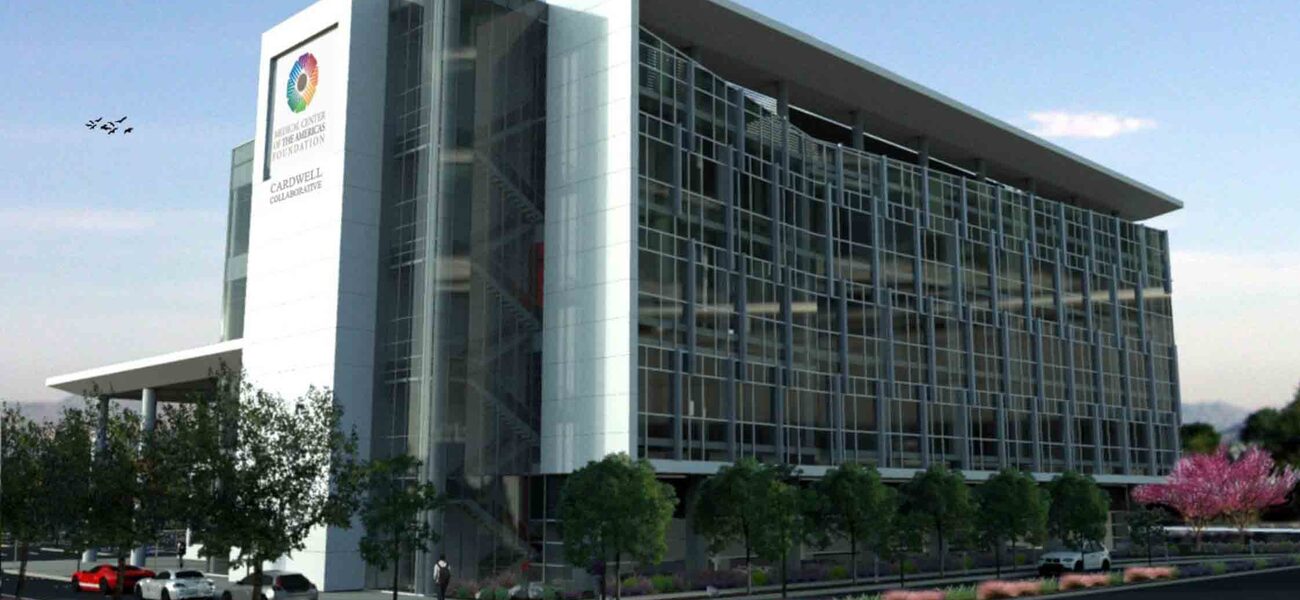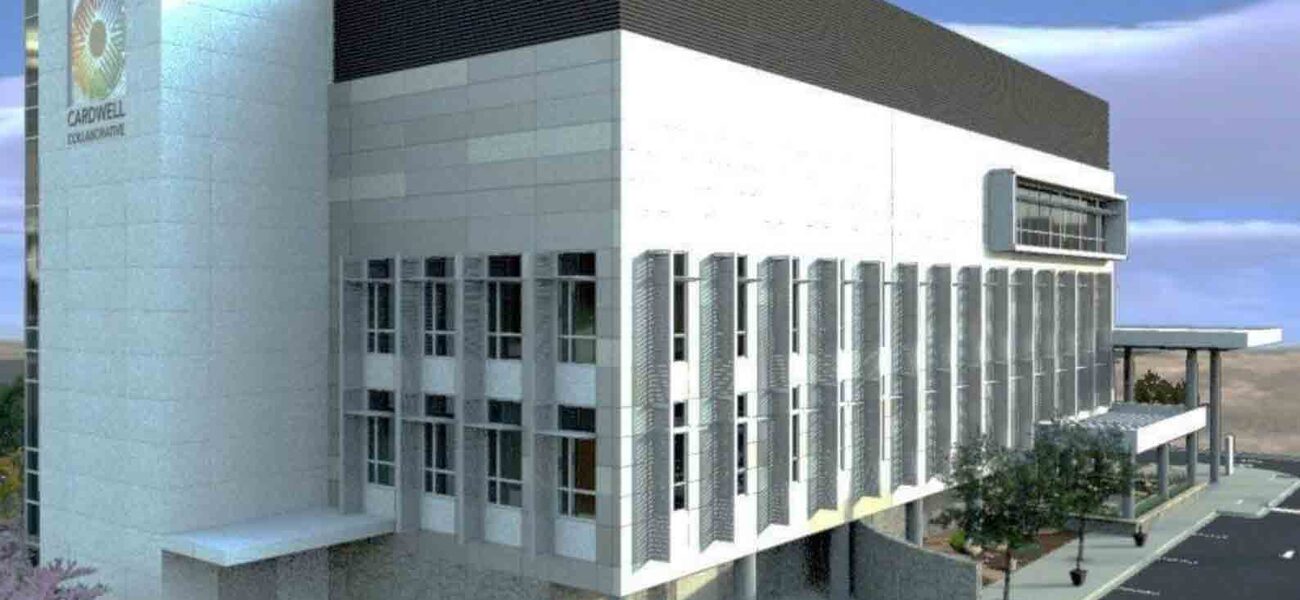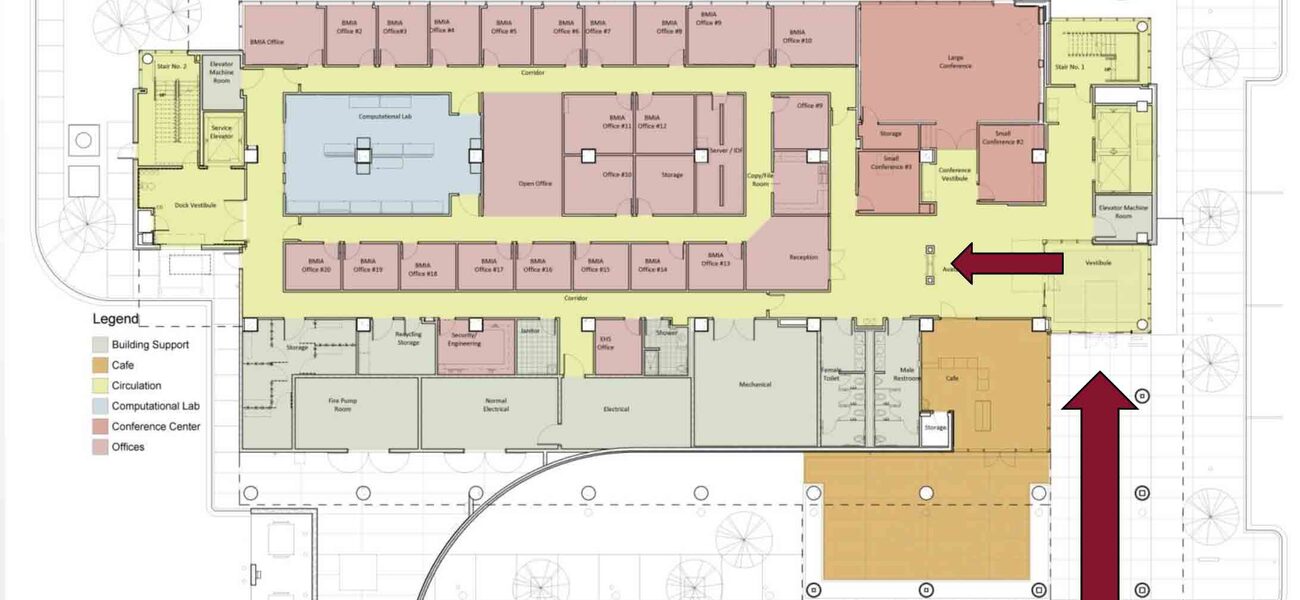A multi-tenant biomedical research and laboratory building is poised to become a powerful economic driver in El Paso, Texas, thanks to an innovative public-private partnership between the Medical Center of the Americas (MCA) Foundation, the City of El Paso, and a diverse group of investors and committed tenants. Construction has not yet begun on the building, called the Cardwell Collaborative, but key stakeholders—such as the city’s public health department, Texas Tech University, and the University of Texas at El Paso—have already snapped up master leases.
The project is the brainchild of the MCA Foundation, a 501(c)(3) non-profit organization that was founded in 2006 with the goal of building a better healthcare infrastructure and attracting prime researchers and healthcare providers to the Paso del Norte region (encompassing El Paso; Las Cruces, N.M.; and the Mexican city of Juárez).
“We have a roughly 80 percent Hispanic population in El Paso,” says MCA Foundation President Emma Schwartz. “It is not uncommon to find four generations living close to one another. This is a rare genetic research opportunity for health issues such as hypertension, diabetes, lupus, and rheumatoid arthritis, which are often common among Hispanics.”
Historically, universities and biomedical research companies have avoided conducting research in the El Paso region because of the city’s dearth of private laboratory space and an uncoordinated patient research population, resulting in both a lost economic opportunity for the city and an underserved local population that also includes personnel at Fort Bliss, a large military installation. El Paso is one of the most under-insured cities in the United States.
“We saw the opportunity to act as a neutral land planner in a poor area of town,” says Schwartz. “Working with private interests, we were able to assess what was and was not being fulfilled by existing systems. There was a new medical school, a new field hospital, and a county hospital that had been renovated, but no one was unifying the biomedical industry.”
The plan to create a locus for the biomedical industry was both aspirational and practical. “Our financial outlook was conservative,” says Schwartz. “We didn’t approach the project with an ‘if you build it, they will come’ attitude.” Instead, business planning for the new building began more than three years ago and was launched in tandem with plans for a new biomedical institute headed by Albert Di Rienzo, recipient of the 2014 Future of Health Technology award. Critically, financing for the project was not derived from the state or a tuition revenue bond, but from a traditional bank loan provided by a consortium of local community banks.
“The project team not only needed to get community buy-in and interest from prospective tenants and their workforces, we also needed to sell the idea to the lenders,” says Schwartz. “From the bank consortium’s perspective, we have a fully leased building, because any speculative space is being leased by the project team.”
An 18-year economic development grant from the city of El Paso will provide a stable income stream of approximately $3 million per year to the MCA Foundation. (The amount will vary slightly each year based on energy consumption and rates under the terms of the franchise agreement, which sets it at “0.75 percent of the incremental increase in compensation received by the City from El Paso Electric Company.”) True to the project’s conservative financial model, however, the Foundation intends to fund the building primarily with income from subleasing.
“The site itself is not one of the most attractive parts of El Paso right now,” says Jerry Akin, vice president and West Region area manager for project management firm Broaddus & Associates, which provided planning services for the project. “It is in a blighted area with truck dock facilities and a railroad running through it. There is a lot of active warehousing and also some that has been vacated or abandoned.” Due in large part to the condition of the site, the city agreed to lease it to the MCA Foundation for a mere $1,000 a year for 99 years.
Broaddus’s master plan for the site involved assessing the densities provided for by the city’s land development ordinance to determine how an initial building layout would work, and then how redevelopments or expansions might impact the site and integrate with the surrounding context. PhiloWilke Partnership was engaged to design the four-story, 80,000-sf Cardwell Collaborative building. The first floor houses the MCA Foundation, along with lobby spaces and common areas. Texas Tech will occupy the second floor, which is to be purely office space. They originally wanted both office and lab space, but eliminated the labs for budget reasons. The third level is also leased by the MCA Foundation, as well as by the new Di Rienzo-headed research company RedSky, and includes incubator space composed of wet and dry lab space for prospective sublease.
“Level four was one of our real challenges,” says Cathryn Horan, an architect at PhiloWilke. A significant portion of the city’s health lab was always intended to be BSL-3, and because of the containment issues associated with BSL-3, the city originally set its sights on the ground floor. “The thinking was that this would minimize the distance any sample had to travel within the building and the number of personnel in contact with it,” says Horan. For security reasons, and for proximity to a rooftop mechanical room, the team persuaded them to occupy the fourth floor instead, which resulted in some innovative approaches for the building’s design.
“Medical Center of the Americas really wanted to have its own distinct identity for this building,” says Horan. “In the visioning session, we put up images of neighboring buildings and some other examples of work in the city of El Paso. Then we brought in a bunch of images for research buildings with uses similar to theirs, so that they could see the whole gamut of possibilities.” The resulting design has an iconic north-facing glass façade welcoming tenants and visitors, while the back side, shaded from the harsh Texas sun, provides public access up to the fourth-floor BSL-3. “They are mostly doing tuberculosis-type testing and testing on samples that are brought in from the detectors in the city, but they also have public that come to them with samples: ‘I don’t know what this (substance) is, I am concerned about it.’ So we have put the BSL-3 in a very safe location up on the fourth floor, but we also have a public access component to get the samples up there.” Thus, the building’s public functions are consolidated on the south-facing side. An “avatar,” or virtual greeter with voice and facial recognition, is one of the building’s high-tech security solutions. Visitors with samples are directed by this avatar to a bank of elevators that take them to the fourth floor.
The community has supported the project as enthusiastically as the city. The MCA Foundation set a goal of raising $10 million in public donations. Within six months, they had received over $7.5 million in commitments, based only on a concept with the promise to help transform El Paso’s economy while improving healthcare for residents. “In both naming our organization and in conceptualizing this project, we made up our minds to dream big,” says Schwartz. “El Paso is the largest metroplex on a border in the world and the busiest border crossing. As we see it, we have not just the right but the responsibility to focus on the Americas, not just the United States.”
Ultimately, Schwartz sees the Cardwell Collaborative building as a potential template for other communities. “We are really focused on being regional because of the reality of being located directly on the border of Texas, New Mexico, and Mexico,” she says. “But we are working with researchers from all over the U.S. and from other countries, as well. The tie back to El Paso is the funding.” The research will enrich biomedical knowledge worldwide, and the business model may set a new standard for public-private partnerships in the field.
By Liz Batchelder
This report is based on a presentation Akin and Horan gave at Tradeline’s 2014 International Conference on Biocontainment Facilities.



